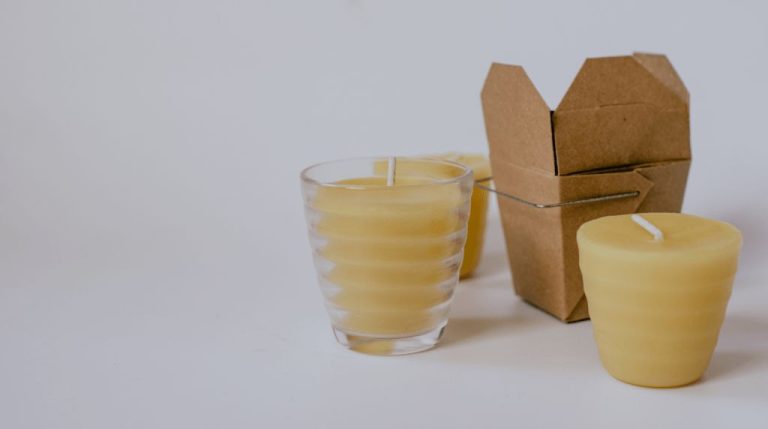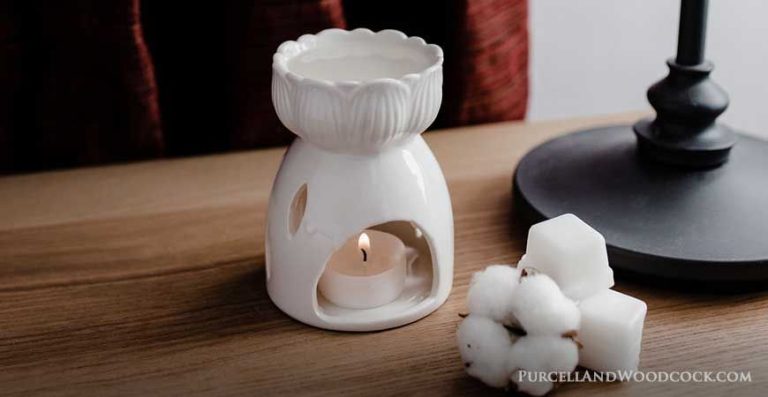What Wax Is Best For Melts?
Wax melts have become an increasingly popular way to scent your home. Unlike traditional candles, wax melts are warmed to release fragrance without an open flame. This makes them a safer and more convenient option. With a wide variety of wax melt types available, it can be tricky to know which wax works best. This article provides an overview of the most common waxes used for melts and key factors to consider so you can choose the right wax for your needs.
When selecting a wax for melts, you’ll want to consider the scent throw, melt point, texture, and appearance. The wax type impacts all of these factors. The goal is to find an option that provides a strong fragrance, melts consistently at standard home temperatures, has an appealing visual look, and is safe to use. With the right wax, you can create melts that offer an exceptional scent experience for your home.
Paraffin Wax
Paraffin wax is one of the most popular waxes used for wax melts and candles. It is derived from petroleum and is a byproduct of oil refining. Paraffin wax has the following properties and pros/cons:
Properties:
- Hard, brittle texture
- Translucent to opaque white color
- Neutral scent
- High melting point (120-150°F)
Pros:
- Inexpensive and widely available
- Excellent scent throw
- Hard finish leaves no residue
Cons:
- Not as environmentally friendly as natural waxes
- Can produce more soot than other waxes
Overall, paraffin wax is affordable, easy to use, and provides excellent fragrance delivery in wax melts. Its high melting point makes it ideal for melts, as it will not melt in warmer environments. The main downside is that it is derived from petroleum.
Soy Wax
Soy wax is made from hydrogenated soybean oil. It is a renewable and sustainable wax made from soybeans grown on farms. Soy wax has a number of properties that make it a popular choice for wax melts:
- Low melting point – Soy wax has a melting point of 115-135 degrees Fahrenheit, making it easy to melt the wax melts.
- Blended well – Soy wax blends well with essential oils and fragrance oils.
- Clean burn – Soy wax has very little soot or smoke when burning.
- Sustainable – As a renewable resource, soy wax is eco-friendly.
Some of the pros of soy wax are that it’s made from a sustainable crop, has good scent throw, and is inexpensive. The cons are that it can be susceptible to frosting and separation. It also may not retain scent as long as other waxes.
Overall, soy wax is affordable, eco-friendly and easy to use. It’s a great choice for beginners working with wax melts. The low melting point makes it accessible and the clean burn produces less soot and smoke. Just be aware it may require more frequent scent refreshing than other wax options.
Beeswax
Beeswax is a natural wax produced by honey bees. It has some unique properties that make it a popular choice for wax melts.
Some key properties of beeswax:
- It has a high melting point of around 144-147°F, which means it holds its shape well and lasts longer than other waxes.
- It has a sweet, honey-like scent that comes through nicely in wax melts.
- It’s hydrophobic, meaning it repels water and doesn’t get soggy or lose its shape.
Some of the pros of using beeswax for melts are:
- It’s all-natural and renewable.
- It creates a nice honey aroma without added fragrances.
- It’s sustainable and not derived from petroleum like paraffin wax.
Some potential cons are:
- It can be more expensive than other wax options.
- The high melting point means it requires a warmer burner to fully melt.
- The natural scent may overpower added fragrances.
Overall, beeswax is one of the best natural wax options for melts, providing excellent performance and a lovely natural honey aroma.
Coconut Wax
Coconut wax is made from the oil of coconut palms. It has become increasingly popular for wax melts and candles because it is a sustainable and eco-friendly option compared to paraffin wax.
Some key properties and characteristics of coconut wax:
- Melting point: 76-82°F, so it melts at a lower temperature than many other waxes
- Hardness: Medium hardness
- Fragrance retention: Excellent fragrance retention due to its high oil content
- Appearance: White color
- Eco-friendly: Made from a renewable resource (coconuts)
Pros of coconut wax:
- Sustainable and eco-friendly
- Excellent fragrance retention
- Smooth wax melt consistency
- Lower melting point than paraffin
Cons of coconut wax:
- Can be more expensive than paraffin wax
- Doesn’t hold its shape as well as some waxes
Coconut wax is generally priced at $1-3 per pound, making it moderately expensive compared to paraffin wax. However the sustainability and performance benefits often make it worth the extra cost.
Palm Wax
Palm wax is made from palm oil, which comes from the fruit of palm trees. It has some unique properties compared to other waxes used for candle making:
Properties: Palm wax is hard and opaque. It has a high melting point of around 135-140°F. When melted, it has a thick, viscous texture. Palm wax contains fatty acids that give candles made from it a smooth finish when burned. The wax becomes crystalline as it cools and hardens.
Pros: Palm wax makes durable, long-lasting candles. It produces candles with excellent scent throw. The high melting point means palm wax candles retain their shape in warm environments. Palm wax is also relatively inexpensive compared to beeswax.
Cons: The high melting point of palm wax means it requires higher temperatures to melt and work with. It can be challenging to get palm wax to adhere to wicks and vessels. The opaque off-white color isn’t as aesthetically pleasing as clear waxes.
Melting Point: 135-140°F
Price: Palm wax is very affordable, typically $1-2 per pound on average.
Sustainability: There are some concerns around the sustainability and ethics of palm oil production. However, palm wax can be sourced from cruelty-free, sustainable plantations. Seek out suppliers using organic, eco-friendly practices.
Gel Wax
Gel wax is a relatively new type of wax that is growing in popularity for wax melts. It has some unique properties that set it apart from other waxes:
Properties:
- Gel wax has a clear, gel-like appearance rather than an opaque solid color like other waxes.
- It has an extremely high melting point, around 400°F compared to 150-200°F for soy or paraffin.
- The texture remains gel-like when melted rather than fully liquefying.
Pros:
- Strong scent throw due to high oil capacity.
- Excellent hot and cold scent throw.
- Lower risk of frosting or sweating in melts.
- Holds up well in warm environments.
Cons:
- Higher price point than paraffin or soy.
- Can be more difficult to work with due to thick gel texture.
- Requires very high melt point, limiting candle options.
Melting Point: Around 400°F
Price: $1-2 per pound on average.
Comparison of Wax Types for Melts
When evaluating the different wax options for melts, it helps to directly compare their key properties, pros and cons, and pricing. Here is an overview:
Paraffin Wax – Paraffin wax is derived from petroleum. It is inexpensive and readily available. Paraffin melts well, produces a strong scent throw, and can hold both fragrance oils and essential oils. However, paraffin wax is not a natural product and some find the scent unpleasant. Paraffin can also produce more soot when burned compared to natural waxes.
Soy Wax – Soy wax is made from hydrogenated soybean oil. It is a natural, renewable resource. Soy wax blends well with fragrances and allows for scent experimentation. It melts at a low temperature and produces less soot. However, the scent throw may not be as strong as paraffin. Soy wax is also more expensive.
Beeswax – Beeswax is all-natural since it comes from honeycombs. It has a lovely honey aroma when burning. Beeswax holds scent well and burns cleanly. However, it can be quite expensive and challenging to work with. The high melting point makes mixing difficult and may result in frosting issues.
Coconut Wax – Coconut wax comes from coconut oil. It offers excellent fragrance retention and a smooth finish. Coconut wax also allows for color experimentation and blends well with other waxes. But it can be brittle after cooling and is moderately expensive.
Palm Wax – Palm wax is made from palm oil. It provides strong scent throw and makes smooth melts. However, palm wax is one of the more expensive options. There are also environmental concerns over palm oil production practices.
Gel Wax – Gel wax contains mineral oil for flexibility. It allows for creativity in textures and shapes. Gel wax melts slowly to fill a room with fragrance. But it can be messy, expensive, and complicated to work with. The texture may not appeal to all melt users.
In summary, factors like scent throw, clean burning, easy mixing, and price point all play a role when deciding the best wax for melts. Consider your priority between natural ingredients versus performance. Test different wax options to determine personal preferences.
Recommendations
When choosing the best wax for melts, consider a few key factors:
Best Overall: Soy Wax
Soy wax is the best overall choice for wax melts. It has excellent scent throw, blends well with fragrance oils, and is clean burning. Soy wax melts evenly and smoothly. It’s also eco-friendly since it’s made from soybeans. Soy wax can be more expensive than paraffin, but it’s worth it for the quality.
Best Budget Option: Paraffin Wax
If you’re looking for an affordable wax, go with paraffin. It’s the cheapest option and readily available. Paraffin wax melts easily and has a high fragrance load capacity. Just keep in mind, paraffin is made from petroleum so it’s not as environmentally friendly as soy or beeswax.
Best for Customization: Beeswax
For the most custom wax blends, use beeswax. You can combine beeswax with other waxes like soy, coconut, or paraffin. This allows you to create melts with specific properties. Beeswax also smells great on its own. The downside is beeswax has a low melting point so it may not hold up as well in warm environments.
Conclusion
In summary, the type of wax you choose for your wax melts depends on several factors like performance, scent throw, environmental impact, and price. Paraffin wax is affordable and has a great scent throw, but it’s not eco-friendly. Soy wax is a renewable, eco-friendly option that also performs well. Beeswax and coconut wax are natural choices, but can be more expensive. Palm wax has benefits but leads to deforestation. Gel wax lasts longer but has a lower fragrance throw. Ultimately, soy wax or a soy-paraffin blend is a good option for most people since it balances performance, price, and sustainability. Do some testing to find the wax type that works best for your needs and preferences. The goal is to find an option that throws scent well, suits your budget, and aligns with your values. With so many wax choices available, you can create custom wax melts that look, smell, and perform exactly how you desire.




